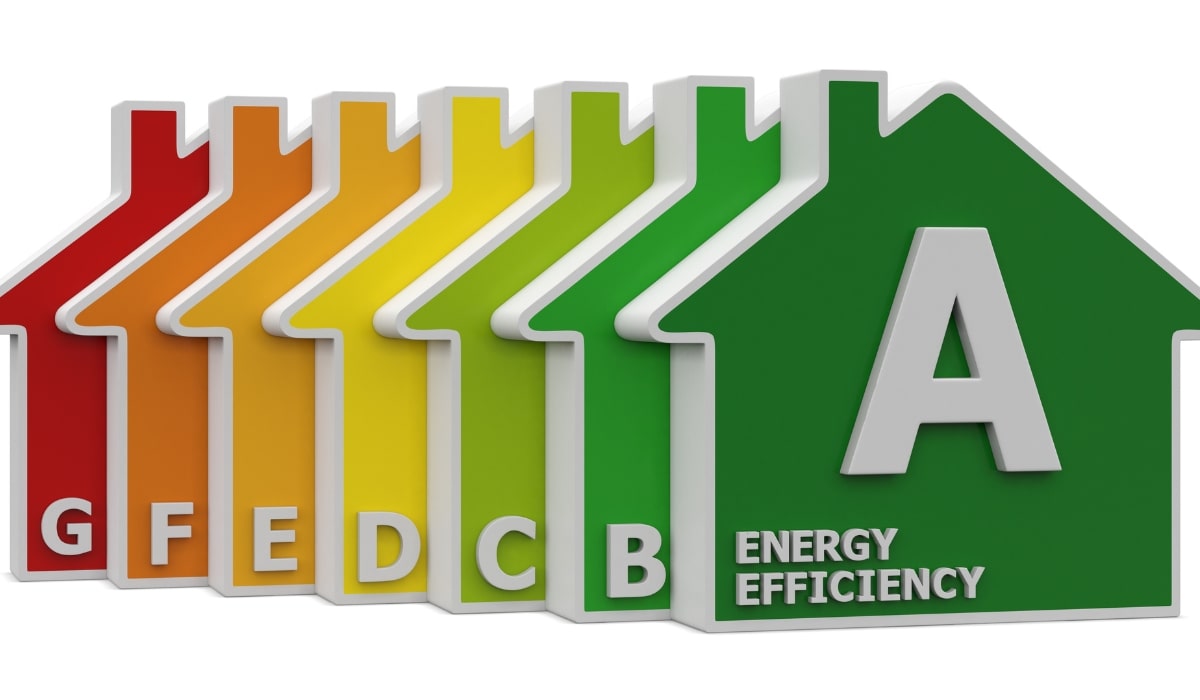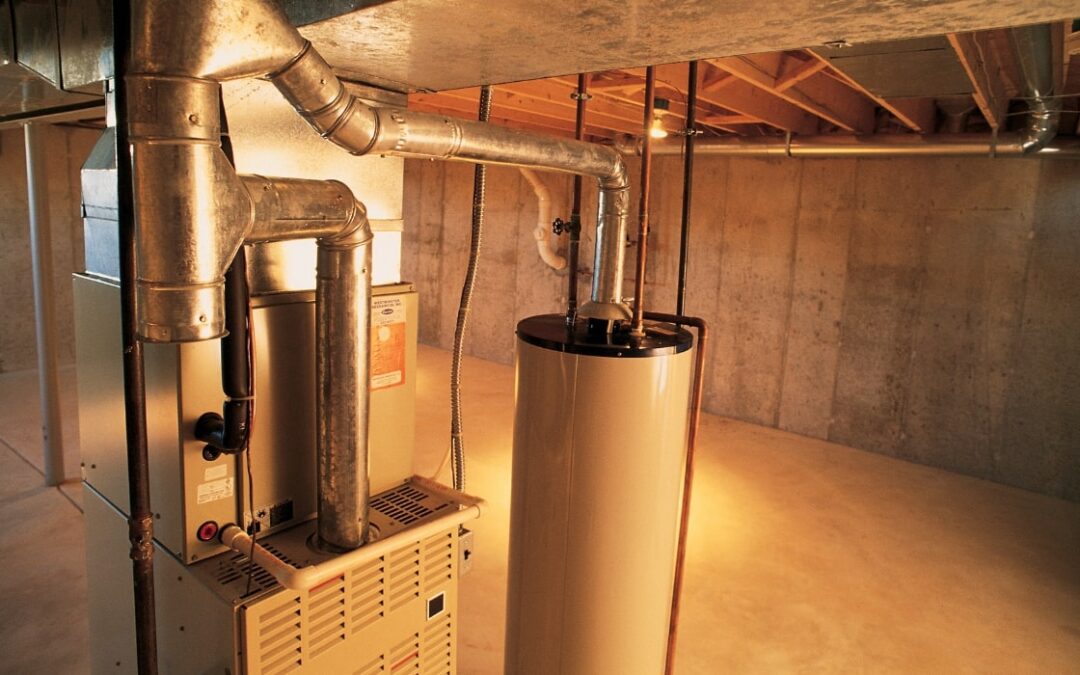This blog post on What Is a Forced Air Furnace was updated in February 2024
If you’ve been shopping for a new house or researching options for heating or cooling your home, you’ve probably heard the term “forced air” used a lot. What exactly does this term mean, and how does a forced air furnace work? Read on to learn more.
What Is Forced Air?
In the simplest of terms, a forced air heating system is just a system that uses air as its medium for distributing heat. Many homes and businesses are heated in this fashion, but not all of them. For instance, some homes use boilers, which heat water and then distribute it to radiators and heat registers throughout the house. A boiler is a heating system which uses water as its medium for dispersing heat. It does not, in other words, fall into the category of forced air.
Most furnaces are forced air furnaces, in that they heat air and then use fans to blow it into duct systems and distribute it throughout the house. The air flows through the ducts and is expelled out of the ducts through vents located in different rooms around the building. You can feel a flow of air coming out of these vents when the furnace fan is going. Hence the term “forced air.”
How Does a Forced Air Furnace Work?
While most furnaces are part of forced air systems, that doesn’t mean all forced air furnaces work in the same way. On the contrary, different types of furnaces can heat air in different ways. Some achieve the process by burning natural gas and using it as fuel to create heat. Others use electricity to heat the air before distributing it throughout the house.
It’s also important to note that not all forced air heating systems use furnaces. Appliances like heat pumps also heat air and then distribute it through a flow of air. Heat pumps are not furnaces but are still a type of forced air heating.
As you might expect, the furnaces in any forced air system are quite complicated and sophisticated in design and performance. For our example, let’s look at how a gas furnace works to heat and distribute warm air throughout your house. To start, the furnace receives a signal from your thermostat. You set a temperature on your thermostat, which sends a message to the furnace’s control board. The furnace then starts burning fuel with the aim of achieving your desired temperature. There are numerous monitors and control systems in place to make sure that the burning fuel is going into the furnace and not leaking out into the air—a crucial protection to keep you and your family safe.
Gas furnaces also include systems to protect you from carbon monoxide, which is produced by the process of burning natural gas. To keep toxic gas out of the air throughout the house, the burning gas in the furnace doesn’t heat the house directly. Instead, it heats up the heat exchanger, a track or pipe made of metal through which the heat and gas exhaust produced by the furnace travels. The metal heat exchanger gets extremely hot, at which point the furnace fan activates and forces air over and past the heat exchange. This air makes it into your ducts, which then carry it to the vents and out into the rooms of the house. Over time, the air will diffuse throughout your home, raising the interior temperature throughout.
Technological Advances in Forced Air Furnaces
In the rapidly evolving world of home heating, the latest advancements in forced air furnace technology are transforming how we keep our spaces warm and comfortable. With a keen focus on efficiency, smart home integration, and environmental stewardship, today’s forced air systems offer more than just heat. They seamlessly integrate with smart thermostats, allowing for precise temperature control and energy savings.
Innovations in energy-efficient designs mean these furnaces not only heat your home more effectively but also significantly reduce your carbon footprint. Manufacturers now prioritize eco-friendly options, crafting furnaces that work smarter, not harder, to achieve the best in home comfort while supporting our planet. This commitment to innovation ensures that choosing a forced air furnace in 2024 is not just about staying warm; it’s about making a smart, sustainable choice for the future.

To Recap Common Technological Advances
Forced air furnaces in 2024 embrace the smart home revolution. They easily connect with home automation systems for effortless temperature control, enhancing both comfort and energy efficiency.
Energy Efficiency Improvements
- High-Efficiency Models: New furnaces boast higher AFUE ratings, ensuring more heat with less fuel.
- Variable Speed Blowers: These adjust airflow precisely, reducing energy use and improving comfort.
Eco-Friendly Options
- Low Emission Technology: Reducing carbon footprint, these furnaces emit fewer pollutants.
- Renewable Energy Compatibility: Some models can integrate with solar power systems, promoting sustainable energy use.
Understanding Energy Efficiency Ratings
When considering a new furnace, understanding energy efficiency ratings, notably the Annual Fuel Utilization Efficiency (AFUE), is crucial. This percentage reflects how well a furnace converts fuel into heat, with higher numbers indicating greater efficiency. Opting for a furnace with a high AFUE rating can significantly lower your energy bills and reduce your environmental impact by using less fuel and emitting fewer greenhouse gases. This approach not only aligns with eco-friendly practices but also offers a practical way to manage heating costs effectively, ensuring your home is both comfortable and cost-efficient.
Recapping The Importance of AFUE
Annual Fuel Utilization Efficiency (AFUE) ratings measure a furnace’s efficiency in converting fuel to heat. Higher AFUE percentages represent more efficient furnaces.
Impact on Costs and Environment
- Lower Energy Bills: High-efficiency furnaces use less fuel, reducing utility costs.
- Reduced Carbon Footprint: Efficient furnaces emit less greenhouse gases, supporting a healthier planet.
Key Features to Look For
- High AFUE Ratings: Look for furnaces with AFUE ratings of 90% or higher for maximum efficiency.
- Energy Star Certification: Furnaces with this certification meet strict energy efficiency guidelines set by the EPA.
Health and Safety Highlights
Focusing on health and safety, advancements in indoor air quality (IAQ) and carbon monoxide safety are vital. Modern furnaces incorporate technology to improve air quality and safety features to detect and prevent carbon monoxide leaks. Emphasizing regular maintenance and safety inspections can significantly enhance these systems’ effectiveness, ensuring a healthier, safer home environment. This commitment to health and safety not only protects residents but also builds trust in the technology and maintenance practices behind modern heating systems.
Key Points to Remember
- Indoor Air Quality (IAQ) Improvements: Modern furnaces are equipped with advanced filtration and ventilation systems to enhance indoor air quality.
- Carbon Monoxide Safety: Enhanced detection and prevention systems safeguard against carbon monoxide leaks.
- Regular Maintenance: Ensures the longevity and efficiency of the furnace, while also maintaining a safe operation environment.
Is a Forced Air Furnace Right for Your Home?
If you are in the process of choosing a heating strategy for your home, you might be wondering if forced air—and specifically, a furnace—is the right option for you. Indeed, boilers are worth a look. They are typically more efficient than furnaces and can be more effective for heating homes in cold, northern climates. However, boilers are also extremely expensive to purchase and install—a factor that pushes many buyers toward forced air. Furnaces also tend to be better for milder climates, which is why you are unlikely to find many boilers in the southern United States.
If you already own a home and it has an existing ductwork system, then you are well situated for a forced air furnace. You can hook the system up to the existing ducts and vents and use them to distribute warm air throughout your home. Having this ductwork in place will significantly decrease the installation costs of your heating system. Even if you don’t have ductwork yet, though, installing a furnace might be worth it for how much more effective central forced air is than using a heating pump. Heating pumps aren’t ideal for achieving consistent temperatures throughout a whole house—especially a larger one. In any case, consider consulting your HVAC professional to get a personalized recommendation about which type of heating system is best for your home. Contact us at Valley Comfort Heating and Air for more information.
Valley Comfort conducts heating and furnace services in the following communities: Santa Rosa, Napa, Rohnert Park, Healdsburg, St Helena, Calistoga and Windsor.
Retrofitting Older Homes with Forced Air Furnaces
If you live in an older home without existing ductwork, you might think a forced air furnace is off the table. But here’s the good news—retrofitting is totally possible, and it’s becoming more common. Many homeowners are now upgrading their outdated radiator or baseboard heating with forced air systems, mainly because it boosts efficiency and increases home value.
While retrofitting can be a bit pricier due to the labor of installing ducts, the long-term payoff is big. Modern flexible duct systems make it easier to weave ductwork through tight wall cavities or attic spaces without major remodeling. If you’re already planning a renovation, it’s the perfect time to consider adding central forced air heating to the mix.
Air Filtration Benefits of Forced Air Systems
One underrated perk of forced air furnaces? Improved air quality. These systems don’t just blow hot air—they often include advanced air filtration options like HEPA filters, UV light purifiers, and electrostatic air cleaners. If you or someone in your household deals with allergies, asthma, or other respiratory issues, a forced air system with proper filtration can help big time.
You can even add whole-house humidifiers or dehumidifiers to your HVAC setup, giving you control over indoor humidity year-round. That’s a major bonus in dry winters or muggy summers. Not only are you heating your space, but you’re also creating a healthier environment with cleaner, more breathable air.
How Forced Air Furnaces Pair with Cooling Systems
Here’s something else a lot of folks don’t realize: forced air furnaces and central air conditioning go hand in hand. If your home already has ductwork for heating, you’re halfway there to installing a cooling system. That shared infrastructure means you can hook up an AC unit or heat pump and deliver cool air through the same vents.
This combo setup is what makes forced air HVAC systems so appealing—they’re efficient, cost-effective, and streamlined. You avoid the hassle (and cost) of installing separate systems, and your home gets consistent year-round climate control. It’s a win-win, especially in regions where temps fluctuate a lot.




